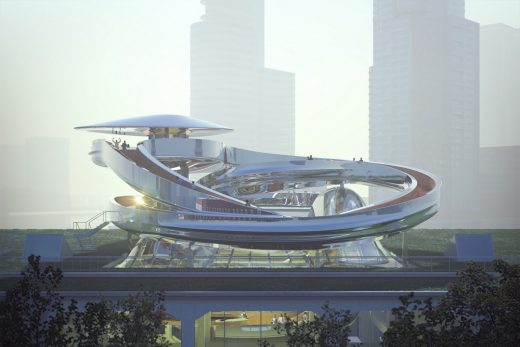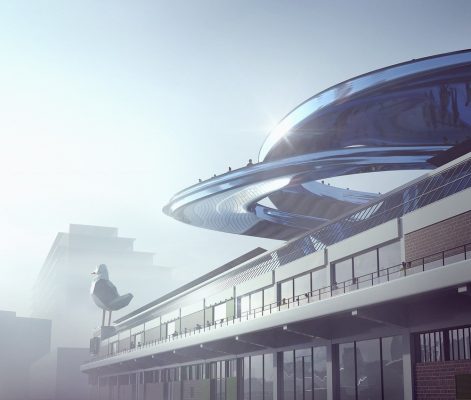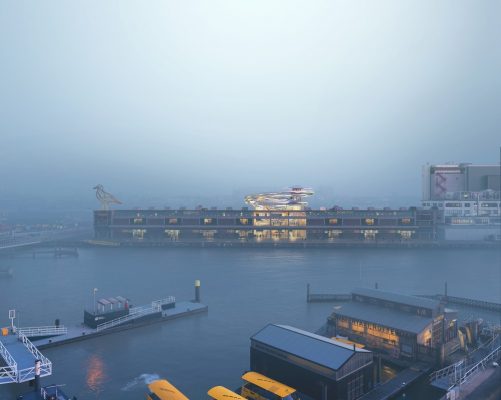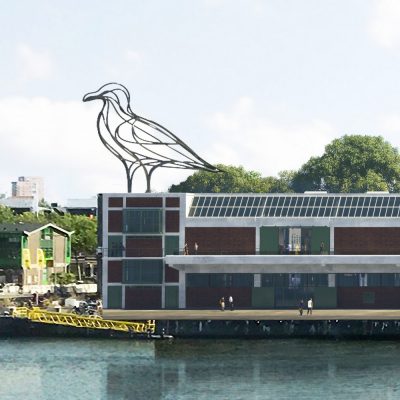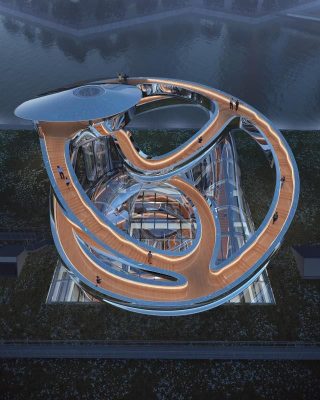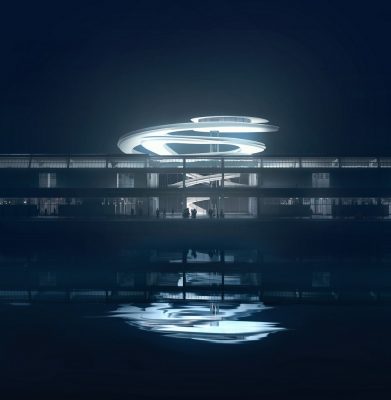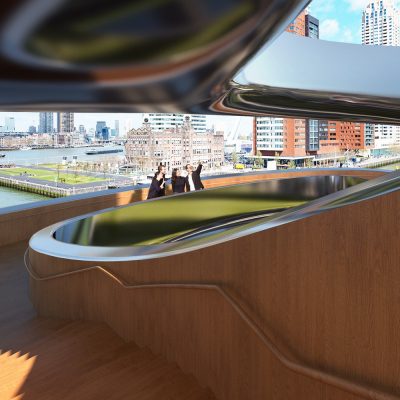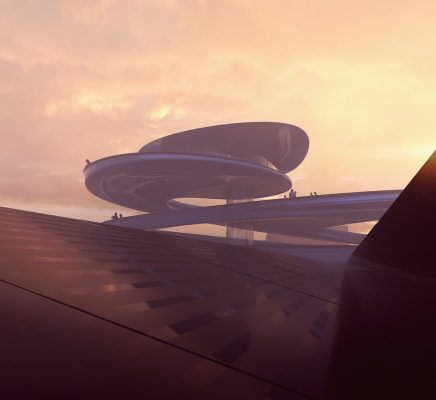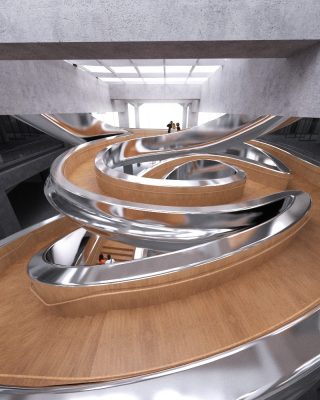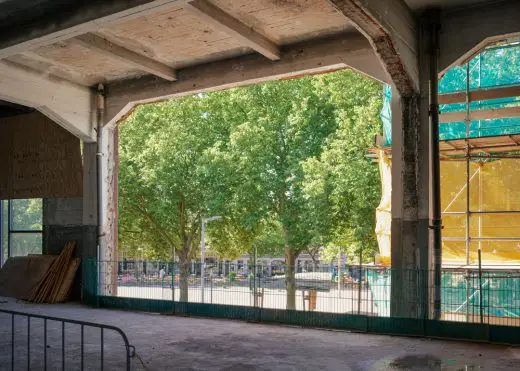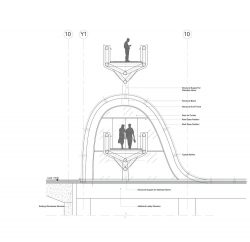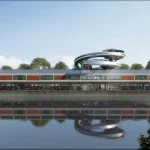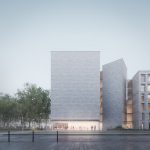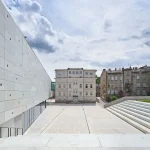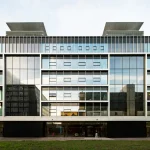FENIX Museum of Migration Rotterdam news, Netherlands architecture, Dutch cultural centre building images
FENIX Museum of Migration in Rotterdam
Architectural Renovation Project in Holland design by MAD Architects.
14 May 2025
Fenix International Art Museum, Rotterdam, The Netherlands
FENIX Museum of Migration by MAD Architects
Updated 9 November 2023:
FENIX, a major new museum inspired by stories of global migration, will open on a landmark site in Rotterdam’s City Harbour in 2025.
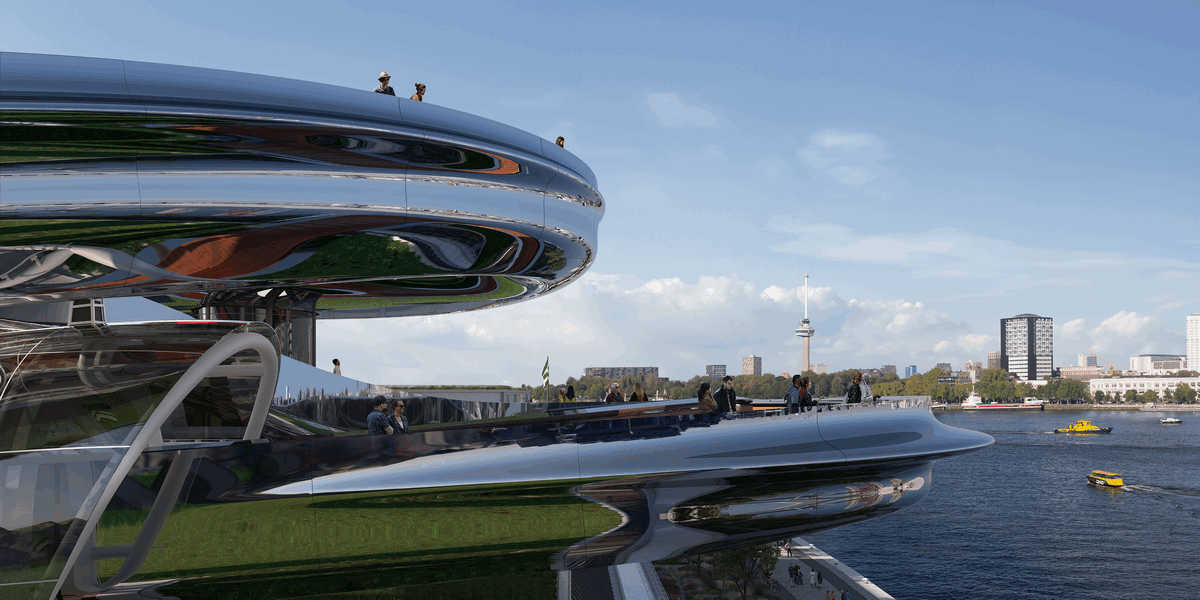
The Tornado at FENIX. Artist impression. Designed by MAD Architects
The 16,000 sqm building, dating from 1923, was once part of the largest warehouse in the world. Located on the south bank of the River Maas in Rotterdam’s historic port district, the warehouse served as an important building for storage and shipping for the Holland-America Line – a Dutch cargo and passenger line. The Holland-America Line facilitated the journeys of millions of migrants in the 19th and 20th centuries who arrived and departed from the surrounding docks.
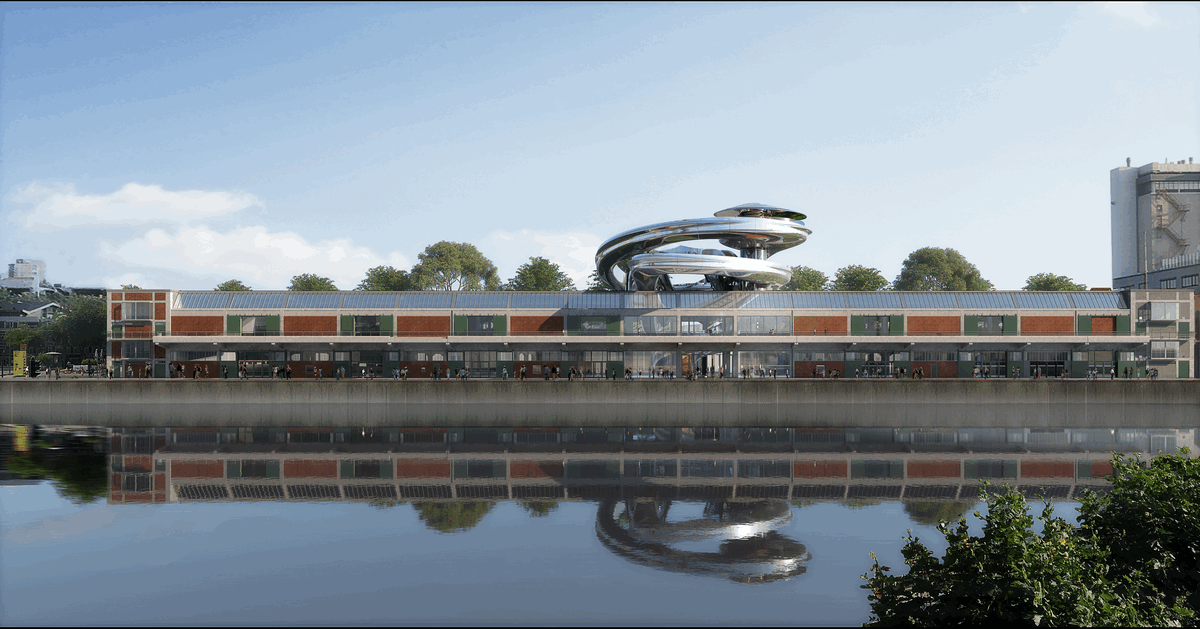
FENIX, artist impression © MAD Architects
The building is being transformed in a radical design by Ma Yansong of MAD Architects, the internationally acclaimed Beijing-based architecture practice. Visitors will immediately see its architectural masterpiece, the Tornado, an organic, dynamic structure evocative of rising air that climbs from the ground floor and flows up and out of the rooftop onto a platform hovering above the city – an uplifting symbol for the journeys experienced by migrants globally. Climbing the stairs of the Tornado will offer an exhilarating new perspective on the city of Rotterdam, with dramatic views across the River Maas and of Hotel New York, the former headquarters of the Holland-America Line.
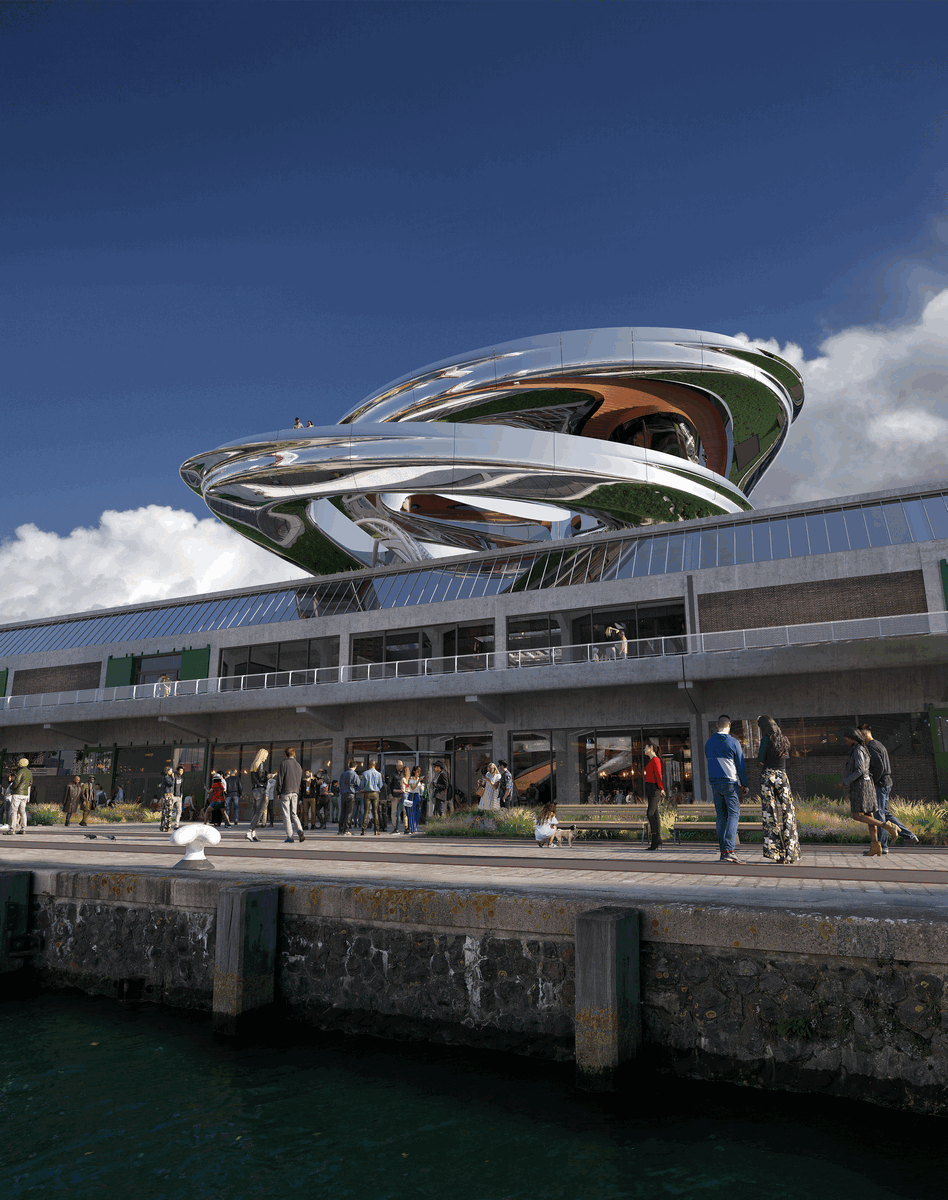
FENIX. Artist impression Designed by MAD Architects
The building has been restored with consultation by Bureau Polderman.
FENIX explores the timeless story of human migration in a changing world through a series of encounters with art, architecture, photography, and history, setting out to redefine the role of a museum for the next generation.

First sketch for FENIX by Ma Yansong, MAD Architects. 2018
Inside the building will be a series of vast gallery spaces over two floors, housing the museum’s growing art and historical collection as well as a series of commissions by emerging artists from across the world, telling stories of migration from their perspective. These include Paris-based Beya Gille Gacha; the Rotterdam-based artist Efrat Zehavi; Korean artist Chae Eun Rhee; artist Raquel Van Haver and US based Hugo McCloud.
Over 200 acquisitions have already been made which examine the theme of migration through the lens of contemporary art, including Bill Viola’s Ancestors and work by contemporary artists such as Francis Alÿs, Steve McQueen, Grayson Perry, Rineke Dijkstra, Kimsooja, Shilpa Gupta, Jeremy Deller and Danh Võ.
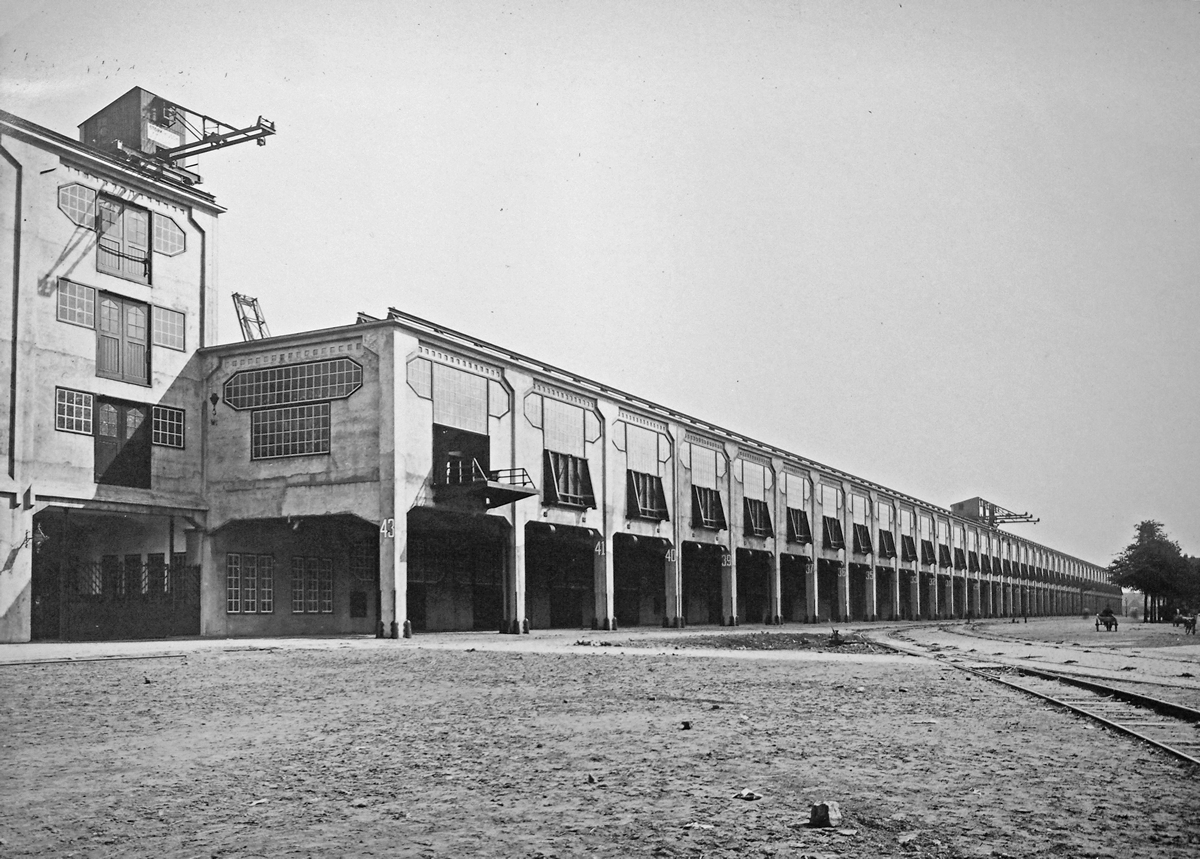
San Francisco Warehouse. 1925. Collection Stadsarchief Rotterdam
Municipal Archives, Rotterdam
The ground floor will house three keynote projects:
• The Maze is a monumental installation made up of 2,000 suitcases donated by individuals from the country’s many communities and the world – a labyrinth-like, immersive installation in which visitors can discover the stories of their previous owners.
• Inspired by Edward Steichen’s Family of Man, one of the most famous photographic exhibitions of all time, an installation entitled Family of Migrants will occupy another of the huge ground floor galleries, made up of hundreds of documentary images and portraits touching on the themes raised by human movement, family love, the danger of the voyage, and saying goodbye. Among them will be iconic images by over 200 photographers from over 60 countries, including Dorothea Lange, Lewis Hine, Wang Fuchun, Ara Güler and Sam Presser.
• Plein, the 2,275 sqm third ground floor space, will represent a radical new approach to the curatorial role of the museum. This vast, flexible space for events and performances will host a constantly changing programme of activity curated by Rotterdam’s communities. Every day and every hour in Plein will be different. For example, at Chinese New Year Plein will celebrate the food and culture of a community who created Europe’s first Chinatown in FENIX’s neighbourhood in 1900.
In the words of the Director, Anne Kremers:
“FENIX’s story is Rotterdam’s. And its story is the world’s: one of arrivals and departures, and of constant change to face the future. In its landmark new home, FENIX will inspire a profound new curiosity about the world we live in.”
Ma Yansong, Founder & Principal Partner, MAD Architects:
“When MAD Architects were asked to work on FENIX, we knew we had to create a dialogue with the existing building and its surroundings – and with a past containing so many stories of migration, memories, and uncertainty. In designing a new structure, we had to show this dialogue between the future and the past, and so continue the story of the building. The Tornado is all about the future, but it’s rooted in the past. For me, it’s a metaphor for the journeys of migrants who passed through this building.”
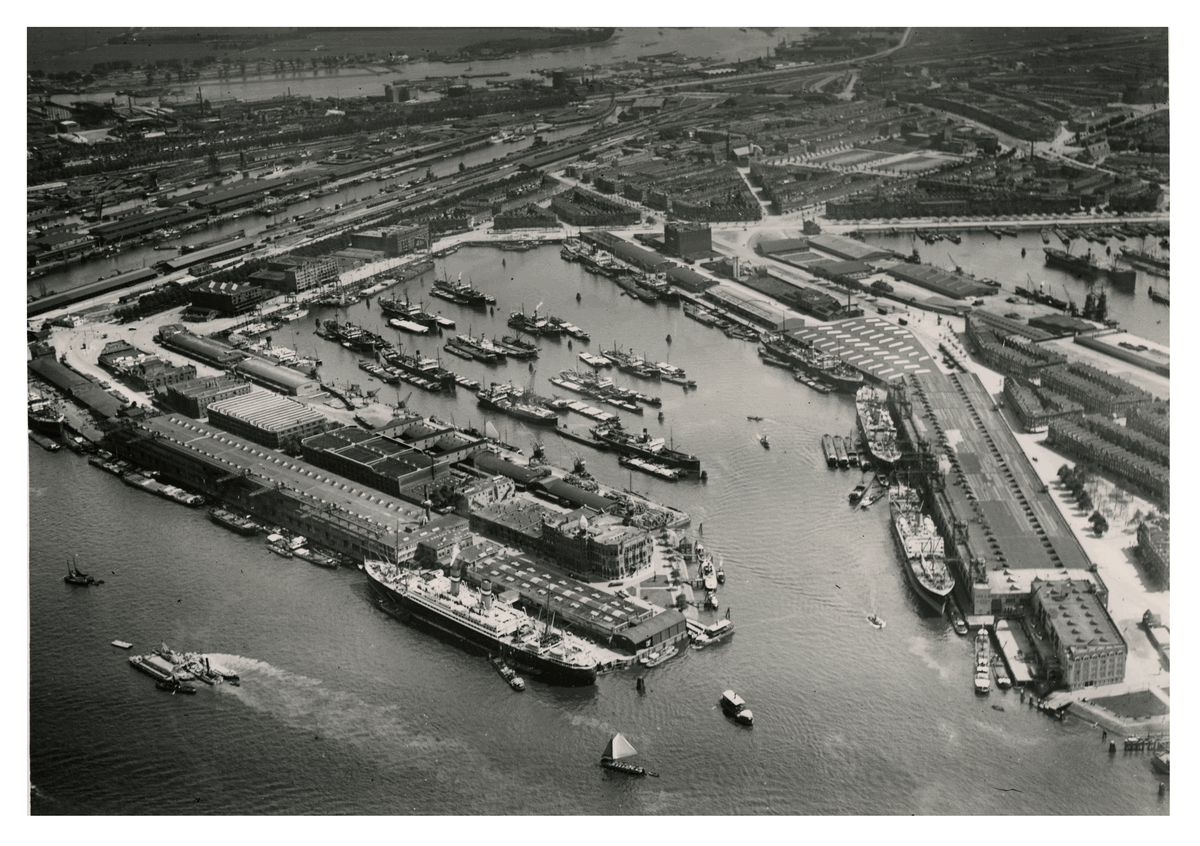
erial shot from the Rijnhaven and Wilhelminakade showing the buildings of the Holland-America Line. On the right side a part of the Maashaven. San Franscisco Warehouse is in the lower right corner. 1939. Made by KLM Aerocarto. Rotterdam City Archives
Between 2013 and 2017, Anne Kremers (b.1989) led the Museum Villa Mondriaan in Winterswijk in the Eastern Netherlands, appointed at the age of 24, the youngest museum director in the Netherlands at that time. Between 2017 and 2020 she worked for the Chow Tai Fook Art Foundation, designing innovative art and design projects in Hong Kong.
FENIX is funded by the Droom en Daad Foundation, founded in 2016 and led by Wim Pijbes, former Director of the Rijksmuseum. The Droom en Daad Foundation is helping redefine Rotterdam for the 21st century – developing new kinds of arts and culture institutions and fostering new creative talent that reflects the city’s diversity, its spirit and its history.
2018-2024
The FENIX Museum of Migration, in Rotterdam, located on the Katendrecht Peninsula, the Fenix Warehouse is on the shore of a significant immigration port in European history, and was the site of one of the largest Chinatowns in Europe. Commissioned by the Droom en Daad Foundation, builds on such historic site, once the largest building of its type in the world. The renovation starts with a newly designed panoramic sightseeing platform, connecting the history of Rotterdam with the city’s present culture.
MAD proposes a double staircase that resembles the movement of tornado. The double spiral is a rhetoric statement, embodied the chaos of disaster and warfare that has caused migration in the past.
The giant seagull sitting on one end of the warehouse, reminds its visitors of old days, when seagull signifies new land in voyage. The building is currently under construction and will be completed by 2024.
13 Nov 2020
FENIX Museum of Migration
Design: MAD Architects, China
Location: Rotterdam, Holland
Photos by Rubén Dario Kleimeer
FENIX Museum of Migration: MAD’s First Cultural Project in Europe Breaks Ground
November 12th, 2020, Rotterdam, Netherlands – MAD Architects’ first cultural project in Europe, the FENIX Museum of Migration, has broken ground in Rotterdam. The project was commissioned by the Droom en Daad Foundation.
The president of the foundation Mr. Wim Pijbes is a leading historian and former general director of Amsterdam’s famous Rijksmuseum. Reflecting on the vision behind the FENIX Museum of Migration, Mr. Pijbes said, “What we want to show is that this is a universal story. People at some point of their lives make a decision, whether it’s forced by war, poverty, religious reasons or something else. They decide to put everything they have into one or two suitcases and to make this journey to a new world and start all over again. What we want to do is to understand the emotion and to show the emotion.”
Built in 1923, The Fenix warehouse was once the largest warehouse in the world. Its location on the Katendrecht Peninsula has been an important port of immigration in European history. Throughout the past century, the Fenix warehouse has been entwined with the history of Rotterdam, including destruction during World War II, and multiple repairs in the 1940s and 1950s.
Immigrants boarding a ship in Rotterdam around 1910. Since the 19th century, millions of immigrants have boarded ships on the Katendrecht Peninsula in Rotterdam. They sailed along the New Maas River towards the North Atlantic to start a new life on the other side of the Atlantic. Collection Stadsarchief Rotterdam/Municipal Archives, Rotterdam.
MAD’s renovation of the Fenix warehouse connects the history of Rotterdam with the present. MAD’s founder Ma Yansong said, “From a distance, the platform and staircase look like a single entity, but when it’s in front of you, it stands as a sculptural work that invites you to explore. It both signifies the Fenix’s witnessing of Europe’s history of migration from the port, and symbolizes the future of the city.”
To preserve the building’s historical legacy, MAD’s renovation embraces the iconic green steel windows and the concrete structure of the Fenix warehouse. In the building’s center, the facade and roof are removed and replaced with glass curtain walls and ceilings, creating a flexible and accessible space. The extensive glazing also offers an uninterrupted frame for the scheme’s striking centerpiece staircase structure.
The new intervention sees two spiral staircases extend from the ground and form an observation deck at the top. Moving through the space with different rhythms, the staircases break down the massive scale of the original warehouse, adding more human-scale and intimate spaces. The stainless steel and wood materials used for the staircases contrast with the warehouse’s original concrete and steel materials, while also evoking the visitors’ imagination of boarding a ship.
FENIX Museum of Migration in Rotterdam under construction:
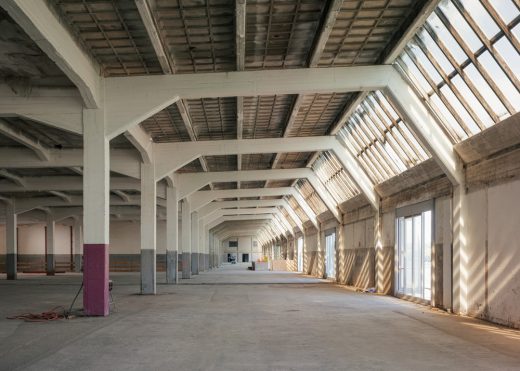
The FENIX Museum of Migration is also integrated into the surrounding community with a high degree of accessibility, with public entrances from both the riverside and the city. The ground floor combines creativity, culture, and culinary spaces to offer diverse activities, and to make art a part of people’s daily lives. After its completion, the museum will hold an exhibition on the theme of “movement,” with contemporary artworks and archives curated in collaboration with local and international art institutions.
FENIX Museum of Migration construction:
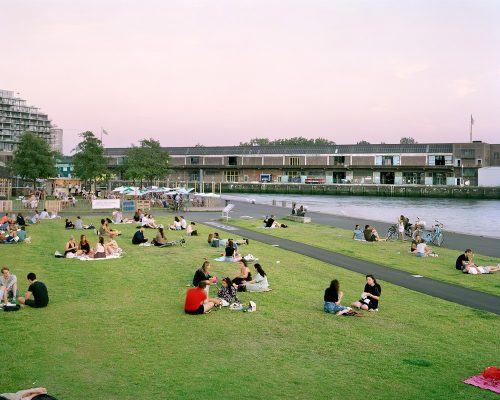
Mr. Pijbes added: “A museum is a phenomenon that has a very strict idea and image in most people’s minds. I want to find a word that has a kind of hybrid function, a place, a platform, an agora.”
FENIX Museum of Migration in Rotterdam construction:
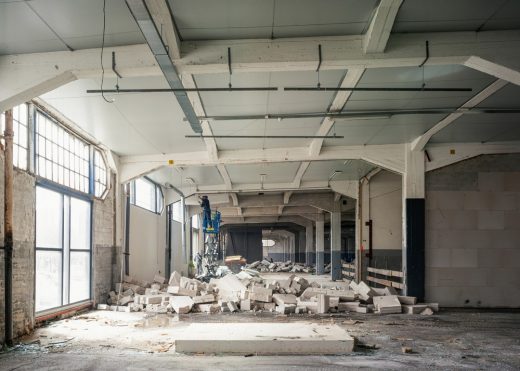
With the completion of FENIX, the Katendrecht Peninsula will become a bridge connecting the north and south of Rotterdam, inspiring more people through the universal theme of “migration.”
Historical Photos & New Drawings
Immigrants boarding a ship in Rotterdam around 1910. About two million people made their way to Rotterdam harbor from 1880 to 1920 to begin a journey that would often end at Ellis Island in New York:
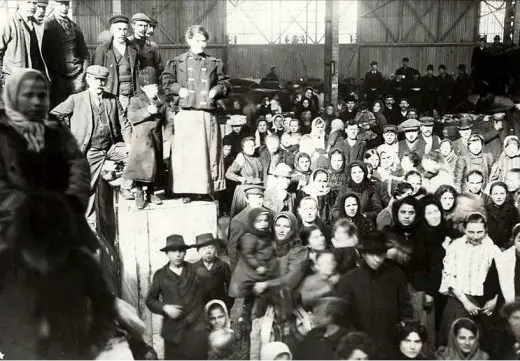
photograph : Collection Stadsarchief Rotterdam/Municipal Archives, Rotterdam
A ship docked at the Fenix warehouse around 1925:
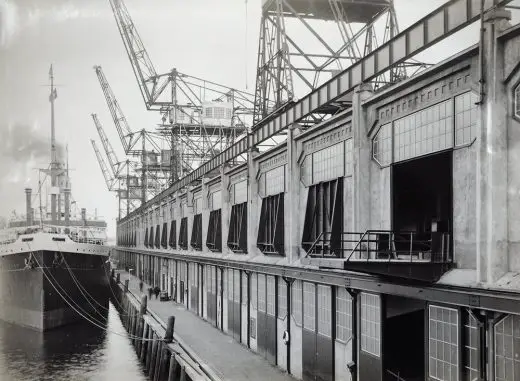
photograph : Collection Stadsarchief Rotterdam/Municipal Archives, Rotterdam
Since the 19th century, millions of immigrants have boarded ships on the Katendrecht Peninsula in Rotterdam. They sailed along the New Maas River towards the North Atlantic to start a new life on the other side of the Atlantic:
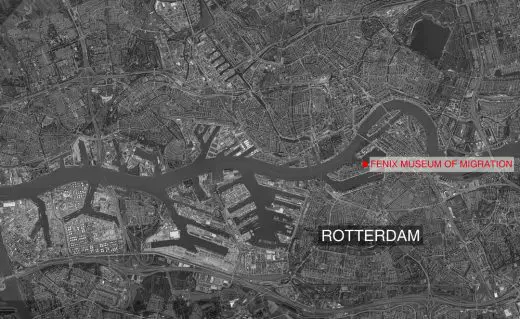
A detailed schematic diagram of the staircase section. The internal structure and height of the stairs fit the overall curved surface design. All platforms have a gentle slope to avoid right-angle turns and ensure the continuity of the curve:
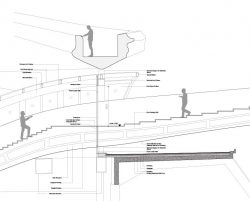
A detailed schematic diagram of the curved-glass rooftop section. The curved glass ceiling of the roof creates a smooth transition between indoor and outdoor spaces, allowing the stair structure to extend out organically and expressively:
A detailed schematic diagram of the staircase section. Only two original beams and two columns were removed in the entire reconstruction. By retaining the main original concrete structure, a new structure was inserted to provide support for the stairs:
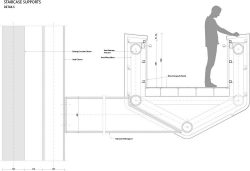
FENIX Museum of Migration Rotterdam – Building Information
Title: FENIX Museum of Migration
Location: Rotterdam, Netherlands
Dates: 2018 – 2024
Typology: Museum, Renovation
Site Area: 13,200 sqm
Ramp Area: 1,050 sqm
Height: 28.3 m
Principal Partners in Charge: Ma Yansong, Dang Qun, Yosuke Hayano
Associate Partner in Charge: Andrea D’Antrassi
Team: Neeraj Mahajan, Marco Gastoldi, Edgar Navarrete, Cievanard Nattabowonphal, Jordan Demer, Chen Yien, Yuki Ishigami, Pittayapa Suriyapee, Claudia Hertrich, Alessandro Fisalli
Client: Droom en Daad Foundation
Executive Architect: EGM
Monumental Architecture Renovation: Bureau Polderman
Construction Advisor: IMd Raadgevende Ingenieurs
Steel Constructor: CSM Steelstructures
Cladding Constructor: Central Industry Group (CIG)
Lighting Consultant: Beersnielsen lichtontwerpers
Installation Design: Bosman Bedrijven
Installation Advisor: DWA
Building Physics Advisor: LBP Sight
Photographer: Rubén Dario Kleimeer
FENIX Museum of Migration Rotterdam images / information received 131120
Previously on e-architect:
24 Nov 2018
Panoramic Viewpoint for the Fenix Warehouse
Panoramic Viewpoint for the Fenix Warehouse
Location: Rotterdam, The Netherlands, northern Europe
Architecture in Rotterdam
Contemporary Architecture in Rotterdam
Rotterdam Architecture Designs – chronological list
Rotterdam Architecture Walking Tours
New Erasmus MC Building
Design: EGM architects
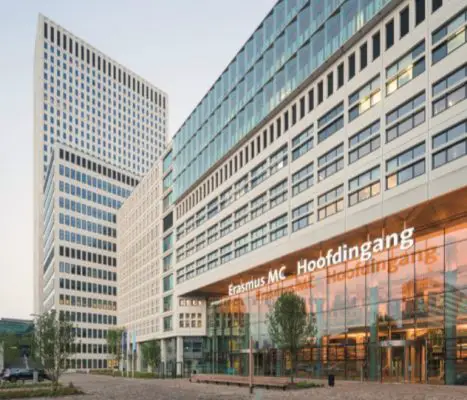
photograph © Rob van Esch
New Erasmus MC Building
CityHub, Witte de Withstraat
Design: Studio Modijefsky, Architects
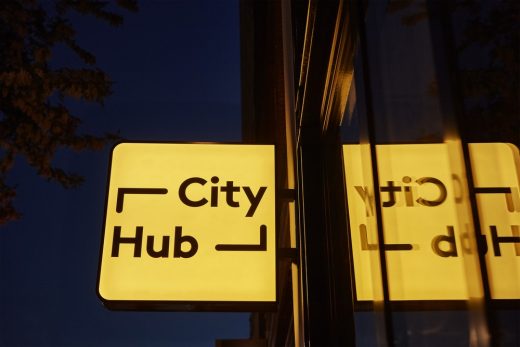
photograph : Maarten Willemstein
CityHub Rotterdam
Design: MVRDV Architects
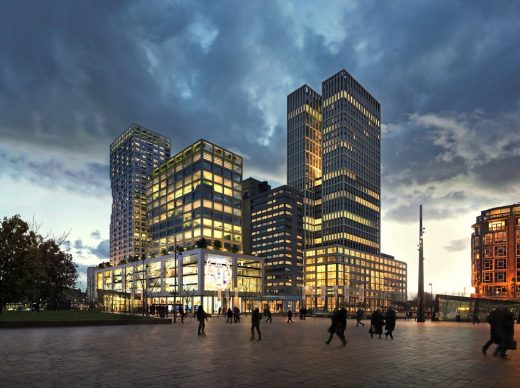
images : MVRDV and Mozses
Weenapoint complex
Design: Simone Drost ARCHITECTURE, Architects
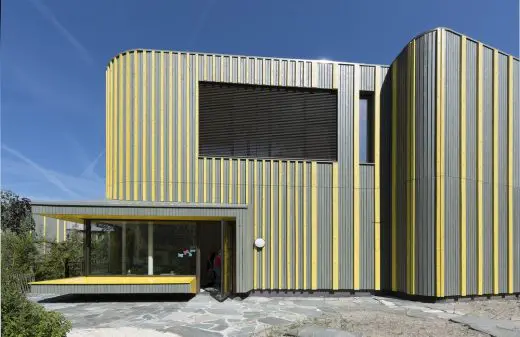
photo : www.roosaldershoff.nl
Project Maximaal, Rotterdam Childcare Centre
Rotterdam Architecture Studios – design firm listings on e-architect
Website: Fenix Food Factory Rotterdam
Comments / photos for FENIX Museum of Migration Rotterdam design by MAD Architects page welcome

